Portland, Maine Travel Guide
Lobster dining, cruising Casco Bay, touring museums and enjoying the bars and pubs in the city's historic center make a visit to Portland enjoyable.
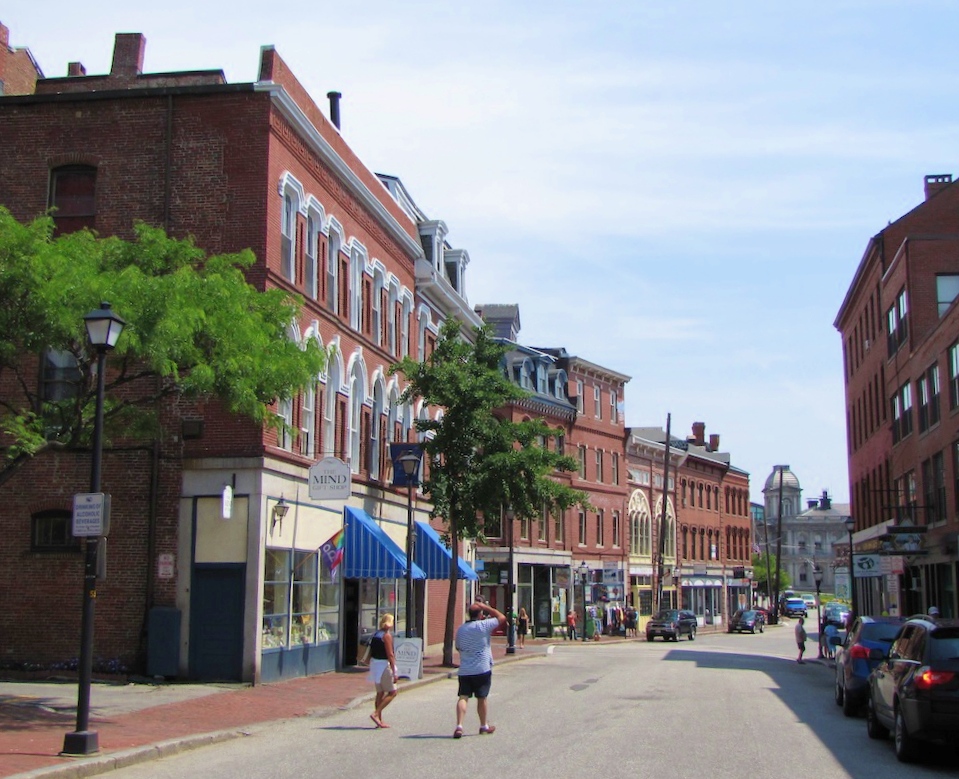
Fore Street, Portland ME.
Portland, Maine, 112 miles (180 km) northeast of Boston MA (map) is one of New England's most vibrant cities, with a revivified and restored city center, a variety of hotels, plenty of shops, and abundant opportunities for outdoor activities in woods and forests. Portland is a great dining town, with a good variety of restaurants, particularly in the Old Port. Maine lobster is always on the menu.
Cities in Maine have never had a reputation for chic or avant-garde ambience because Maine is a rural state, and it's the farmlands, woodlands, and coastal industries, such as lobstering, that count.
But Portland, the state's largest city and its transportation hub and business center, may be changing all that.
What to See & Do
In Portland, you can visit the city's colonial, Early American, and Victorian landmarks, browse through the Portland Museum of Art, or take a cruise in Portland Harbor or Casco Bay.
The Civic Center draws sports events, conventions, and big-name entertainers, and its revitalized waterfront area, known as the Old Port, is now even more attractive than it was in its Victorian heyday when the railroads, the huge sailing fleet, and the trade in lumber and fish made Portland prosperous.
Portland Museum of Art
The Portland Museum is Maine's oldest (1882), largest, and most important art museum, with 17,000 works of art displayed in a complex of several buildings.
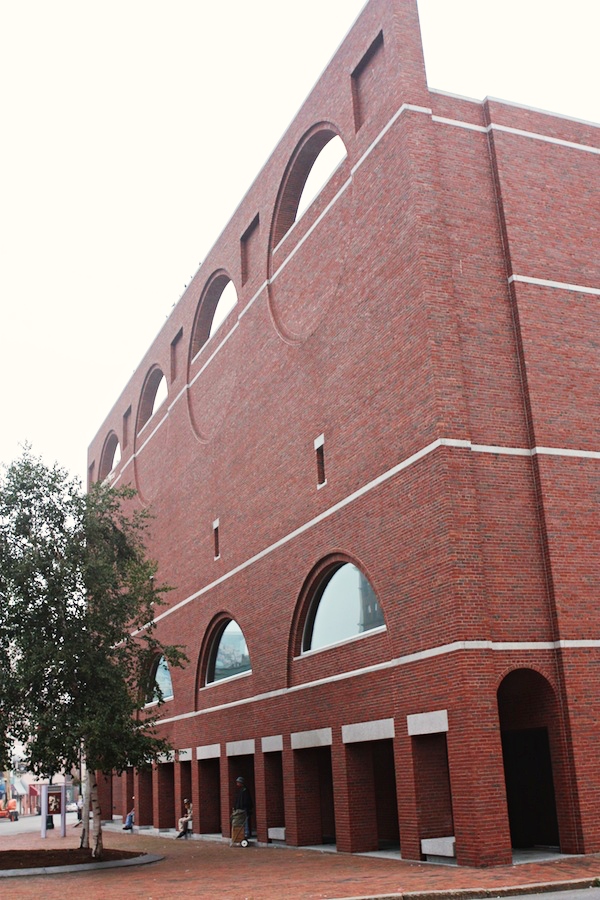
Portland Museum of Art.
Particularly strong are the collections of 19th- and 20th-century American art relating to Portland and to Maine, and the best collection of European art north of Boston.
The collections include works by Mary Cassatt, Frederic Edwin Church, Edgar Degas, Marsden Hartley, Winslow Homer, Childe Hassam, Rockwell Kent, Fitz Henry Lane, Claude Monet, Louise Nevelson, Pablo Picasso, Pierre-Auguste Renoir, Gilbert Stuart and Andrew Wyeth, Jamie Wyeth and N C Wyeth.
The museum's treasures are preserved and displayed in three buildings:
—Charles Shipman Payson Building, a post-modern structure by Henry N Cobb of I M Pei & Partners
—L D M Sweat Memorial Galleries, a Beaux-Arts building (1911) fully restored in 2002
—McLellan House, a grand Federal-style house (1801), built by John Kimball Sr and renovated in 2002.
The museum offers about 15 changing exhibits each year, as well as classes and lectures.
While you're in the area, you might also like to visit the Bowdoin College Museum of Art in Brunswick ME, a smaller yet outstanding collection, well exhibited, that's only 26 miles (42 km) north of Portland, about a 30-minute drive.
Portland Observatory
America's only maritime signal tower, this historic lighthouse-like monument at 138 Congress Street was built in 1807 and now offers the best views of Portland from Memorial Day weekend through Columbus Day.
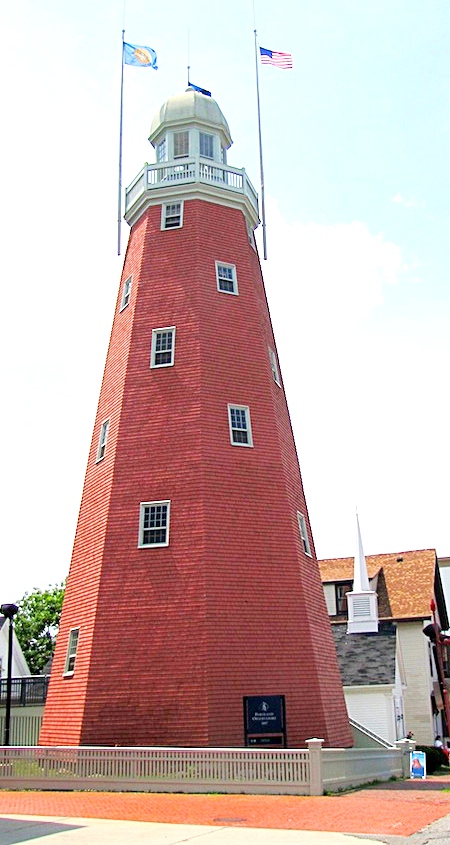 Portland Observatory
Portland Observatory
The Portland Observatory, an octagonal wooden tower built on a Portland hilltop one mile (620 meters) northeast of the Old Port (map) by Captain Lemuel Moody in 1807, was a communications station. Equipped with a powerful Dollond telescope, Captain Moody could spot ships as far as 30 miles away at sea.
As soon as he spotted and identified an arriving vessel, Captain Moody hoisted signal flags to alert the ship's owners that "their ship had come in." This gave the owners time to arrange dockage and porterage for its unloading and the swift distribution of its cargo.
Captain Moody worked in his observatory until 1846, signalling to vessels and owners, and recording the weather three times daily, compiling a historical profile of each day for mariners.
Maritime signal stations such as the Portland Observatory were common in the 1800s, but Portland's is now the only one remaining in the USA.
Restored in 1939 by the Works Progress Administration, and again in 1998, the observatory is now a museum owned by the city. The ground and second floors hold exhibits of photographs, artifacts and hand-written records from the observatory's active years as a communications center.
Want to see what Captain Moody saw? Climb the 103 steps to the cupola of the observatory to enjoy the panoramic view of Portland.
The Portland Observatory is maintained and administered by Greater Portland Landmarks. It's open every day from Memorial Day weekend through Columbus Day. There's an admission fee; no restrooms, though.
Children's Museum & Theatre of Maine
Fun for the kids: a touch tank of Maine creatures, a dress-up theater with plenty of costumes, and more at 142 Free Street (Tel. 207-828-1234).
Wadsworth-Longfellow House
The Wadsworth-Longfellow House is where Henry Wadsworth Longfellow (1807-1882) grew up.
Built by Henry's grandfather, it was the first completely brick house in Portland. Good thing: Peleg and his wife Elizabeth raised ten children in it, including daughter Zilpah, who married Stephen Longfellow and bore him the son they named Henry.
Henry moved out (to the Longfellow House in Cambridge MA, among other places), but his younger sister, Anne Longfellow Pierce, continued to live in the house until her death in 1901.
The house and its family furnishings were willed to the Maine Historical Society, which has preserved it as a museum to the poet and his family. Virtually all of the furnishings are family possessions.
There's a beautiful colonial revival garden, and the headquarters of the Maine Historical Society is located right next door.
Precede your visit to the Wadsworth-Longfellow House with a visit to the Tate House, and follow it with a visit to the Victoria House, to get an overview of upper-class domestic architecture in Portland from the colonial period to the Civil War era.
Follow ME Route 22, which leads to Congress Street, to the house.
Victoria Mansion
Victoria Mansion, 109 Danforth Street, is the finest example of Italian villa-style residential design from the pre-Civil War era in America. Built between 1858 and 1860, the Victoria Mansion (or Morse-Libby House), with 90% of its original luxury furnishings, is a time machine to take you back to that era.
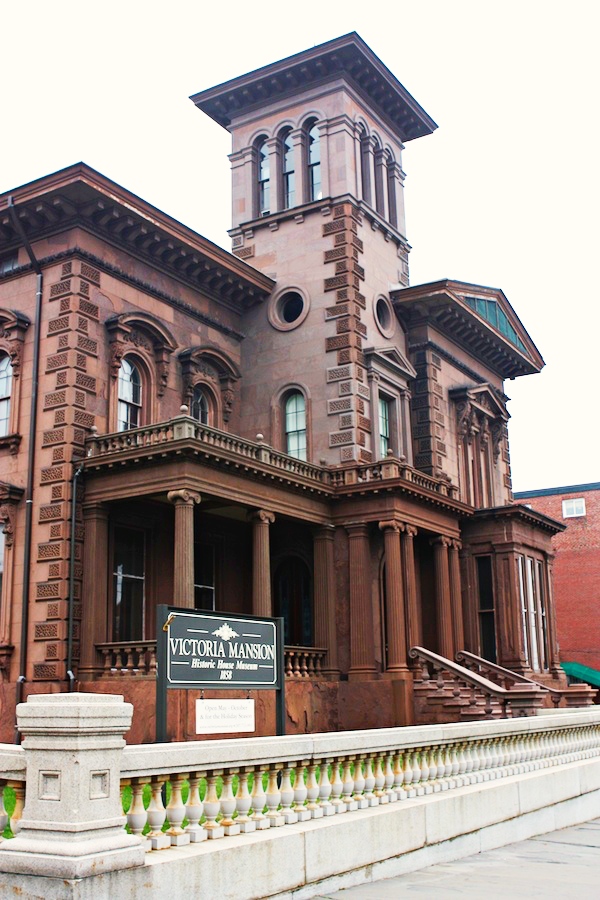 Victoria Mansion
Victoria Mansion
What's significant about the huge asymmetrical brownstone house with its four-story tower is not just its exterior architecture, but the period authenticity of its intact original interior design and furnishings, of which more than 90% survive: works of art, carpets, gas lighting fixtures, stained glass, even the dinner services of porcelain, silver and glassware.
Designed by New Haven CT architect Henry Austin, Victoria Mansion was built as the Maine summer home of Mr Ruggles Sylvester Morse and Mrs Olive Ring Merrill Morse.
The Morses, who had made their money in New Orleans hotels, hired Gustave Herter of New York to design the interiors. This was the first of Herter's projects, and the only one to survive.
Herter spared no expense, equipping the house with every modern convenience, including gas lighting, hot and cold running water, central heating, and a servant call system, all cutting-edge comforts in 1858.
Lived in by only two families, the Morses and the Libbys, during its nearly two centuries of existence, the house was saved from demolition in 1940 by William H Holmes, who bought it with his own money and later transferred ownership to the Victoria Society of Maine, which now preserves it.
Time Machine aptly describes it: step inside, and you're in the Portland of before the Civil War.
Tate House
The Maine forest was for a long time the prime source of ship masts for the British navy.
All white pine trees over 24 inches (61 cm) in diameter were, by law, the property of the British king, and must be sent to the great shipyards of England.
The man who managed the whole trade in white pine for masts was Portland's George Tate, Senior Mast Agent.
Tate grew rich in the mast trade. In 1755, George and Mary Tate and their family moved into their grand new Georgian-style townhouse on a hilltop in the Stroudwater Village section of Portland, overlooking the mast yard in the Fore River.
The house's architecture is unusual in that it has a windowed third story above its gambrel roof.
The American Revolution brought an end to Tate's control of the white pines—and to his prosperity—but his house survived the perils of war and fire, and is now the only pre-Revolutionary house in Portland that's open to the public.
Tate House is not the only historic house here. Sharing the hilltop location, facing it across the street is the Means House (1797), part of the Tate House Museum complex which now holds the Museum Shop, ticket office, and administrative offices.
Along with visits to Portland's other notable houses, such as Victoria House and the Wadsworth-Longfellow House, Tate House gives you a good view of several centuries of American domestic architecture.
Tate House, maintained by the Society of the Colonial Dames of America in the State of Maine, is west of the center of Portland, across the Fore River and very year the Portland International Jetport. Here's a map to take you from the Portland Museum of Art in the center of Portland to the Tate House near the airport.
Ferries & Cruises
Ferryboats from Portland to points in Maine's Casco Bay depart from the Casco Bay Municipal Ferry Terminal on the Maine State Pier off Commercial Street at the foot of Franklin Street (map).
Casco Bay Lines, 56 Commercial at Franklin Street, will take you over to Bailey's Island in summer.
While on the 5-1/2-hour cruise, you'll be told all about the island's history and its geologic features, plus lots of Portland and Casco Bay lore. On a sunny day, this is a very fine way to "take the air."
Other cruises are a bit shorter and a bit cheaper: There's a year-round sunset cruise to the islands (2-1/2 hours), a seasonal music cruise around Casco Bay (3 hours), and the year-round cruise on the US Mail boat which goes to six of the Calendar Islands (3 hours).
There's full info on the Casco Bay Lines website. If you're driving, be sure to look at the parking information. In summer, parking near the Ferry Terminal is limited and often full. More...
Ferry to Nova Scotia
The International car ferry to Yarmouth, Nova Scotia, Canada, no longer serves Portland. It departs from Bar Harbor ME. More...
Maine Narrow Gauge Railroad Co. & Museum
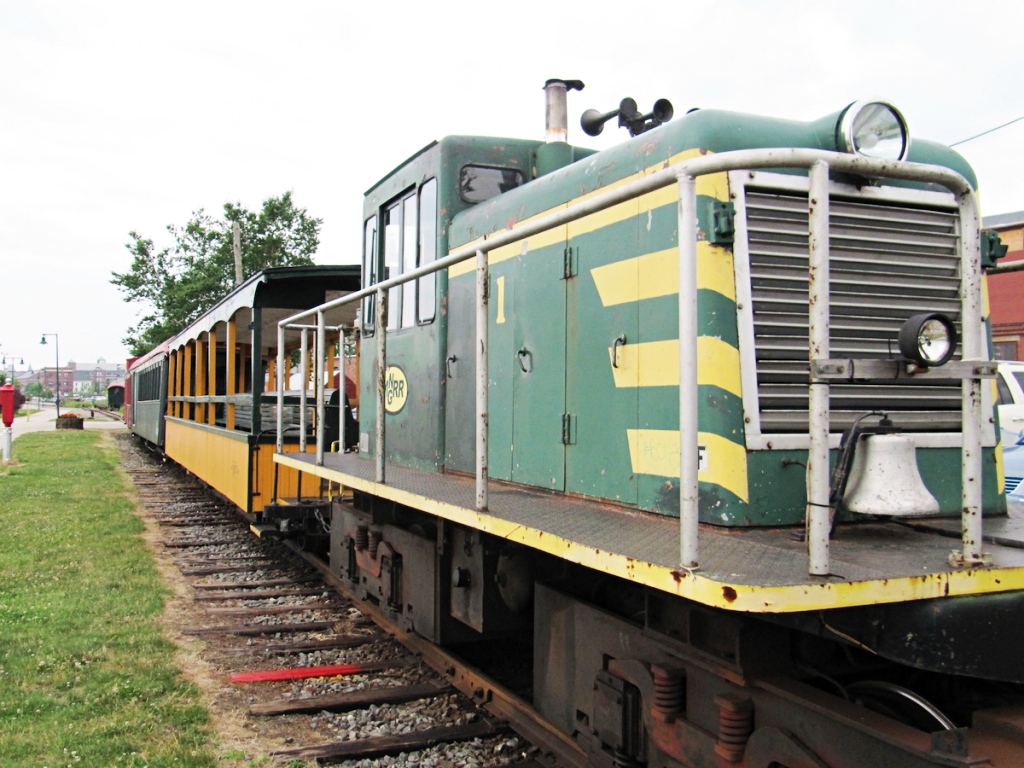
The narrow-gauge train
This excursion train takes a short run along the Portland waterfront hauling the Rangeley Parlor Car, the only two-foot-rail-gauge parlor car ever built. More...
Shopping
Head for Exchange Street (map), the pretty little street in the city center that's lined with boutiques and coffee shops.
Where to Stay
Hotels in Portland are concentrated in South Portland just off Interstate 95 near the Maine Mall and Portland International Jetport, but there are also fine lodgings in the city center, including some thrifty ones.
Use our handy Hotel Map with Prices to find just the lodgings you want.
City Center Hotels
The 127-room Courtyard by Marriott Portland Downtown/Waterfront is right in the Old Port on Commercial Street, near all the restaurants and shops of the city center. More...
The 3-star, 120-room Hilton Garden Inn Portland Downtown Waterfront is just north of the center, very near the Casco Bay Ferry Terminal. More...
The 3-star, 122-room Hampton Inn Portland Downtown Waterfront is just a block or two inland from the terminal, as is the 3-star, 95-room Portland Regency Hotel & Spa. More...
The 3-star, 289-room Westin Portland Harborview is near the Portland Museum of Art, up on the hill with excellent views. More...
The 3-star, 239-room Holiday Inn Portland By the Bay is here as well. More...
Thrifty Hotels
Move out of the center and you save some of your travel budget. The nice, 39-room Inn at St John is 1.5 miles (2.4 km) west of the Old Port, only a 7-minute drive. More...
The nearby 3-star, 105-room La Quinta by Wyndham Portland is more modern, and just off I-295. More...
Transportation
Portland is 108 miles (174 km) northeast of Boston MA (about a 2-hour drive) and 161 miles southwest of Bar Harbor ME (4 to 5 hours by car) (map).
The Portland Transportation Center, 100 Thompsons' Point Road, just west of I-295 Exit 5 (map), houses the Amtrak train station and the Concord Coach Lines bus terminal. It's less than three miles (5 km) from the Portland International Jetport.
Car
Coming from Boston and New Hampshire, the Maine Turnpike (I-95), a toll road, is the fastest route to Portland. South of Portland, I-295 branches off from I-95 and takes you north right through the heart of the city, including to the Portland Transportation Center.
Bus
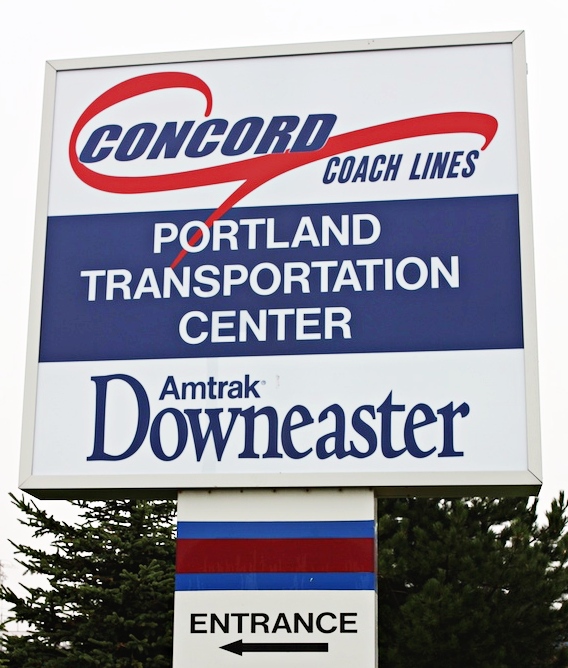
Concord Coach Lines operates 14 buses daily in each direction between Boston and Portland. The trip takes about two hours. Some departures from Portland are express buses directly to Logan Airport with no stops; other departures go to both Logan Airport and Boston's South Station Bus Terminal.
Concord Coach also operate a premium service between Portland and New York City, by advance reservation only, with tickets bought online. More...
Greyhound buses arrive at the Greyhound Station at 950 Congress Street, between St John and Valley streets (map), closer to the city center.
Train
Amtrak's Downeaster train travels five times daily on the 2-1/2-hour journey between Boston's North Station and Portland ME (Portland Transportation Center), stopping at Woburn and Haverhill MA; Exeter, Durham and Dover NH; Wells, Saco and Old Orchard Beach ME. The Downeaster continues past Portland to Freeport and Brunswick ME. More...
Train fare is a few dollars more than bus fare, and the train trip is a bit longer, but it's a more comfortable ride, with snack-and-drink service available.
Flights
Portland International Jetport, 4 miles (6.4 km) west of the city center off I-95 and I-295, serves flights by a number of major airlines, with nonstop flights to more than a dozen US cities—in short, to most major airline hubs east of the Mississippi.
Portland Metro Bus 5 connects the Jetport with Portland Transportation Center (bus & train) and the Maine Mall.
Ferryboat
Casco Bay Lines operates ferries to the islands in the bay east of Portland. There's full info on the Casco Bay Lines website. If you're driving, be sure to look at the parking information. In summer, parking near the Ferry Terminal is limited and often full. More...
Ferry to Nova Scotia
International car ferry service to Yarmouth, Nova Scotia, Canada, no longer departs from Portland. Its US port is Bar Harbor ME. More...
Portland City Bus
The public bus system in Portland is operated by Greater Portland Metro. The buses connect all of Portland's transportation stations, including the ferry and cruise terminals and the Portland Transportation Center (Amtrak trains and Concord Coach intercity buses). Bus Route 1 will take you from the Portland Transportation Center along Congress Street through the city center to the East End. More...
